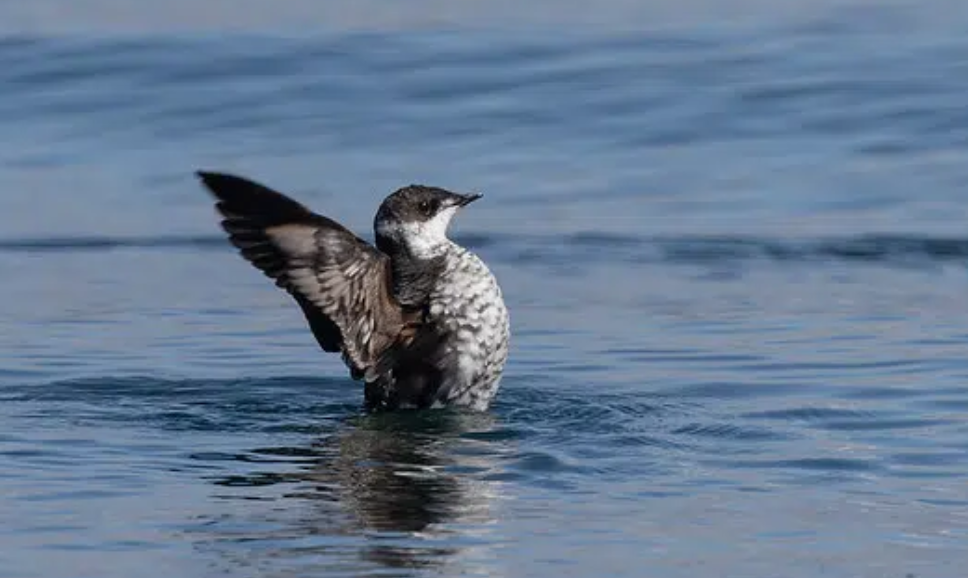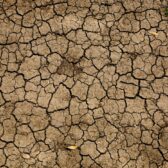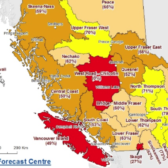Court criticizes Minister Stephen Guilbeault's interpretation of law
A Federal Court Justice has ruled in favour of conservation groups that challenged the federal Environment Minister for failing to take action to protect the critical habitats of at-risk migratory birds across the country. This includes the threatened Marbled Murrelet, a seabird that relies on coastal old-growth forests in B.C. for nesting.
Ecojustice lawyers, on behalf of Sierra Club BC and Wilderness Committee, were in Federal Court last fall to advocate for the protection of migratory birds and their habitats across Canada.
The groups’ main contention was that a “protection statement” issued by federal Environment Minister Steven Guilbeault in 2022 too narrowly interpreted the Species at Risk Act (SARA). The groups argued that the minister had unlawfully limited his duties to protect at-risk bird habitat by protecting only the nests and not the wider habitat at-risk migratory birds need to survive and recover.
Last week, Chief Justice Crampton set aside the “protection statement” and sent it back to Minister Guilbeault for reconsideration with the Court’s reasons. The Chief Justice concluded that only ensuring the protection of migratory birds’ nests, but not the rest of their critical habitat, was not justified under the law or key facts before the Minister.
The Chief Justice concluded that the Minister should have considered that habitat loss and degradation is a key driver in the decline of most at-risk bird populations. Further, the Chief Justice found that the Minister had not considered that it is nearly impossible to spot the nests of many migratory birds, including Marbled Murrelet, so protection based on identifying individual nests alone is completely ineffective.
The Minister now will have to reconsider how he interprets his duties to protect at-risk migratory birds’ critical habitat under SARA guided by the Court’s reasons. The conservation groups are hopeful this decision will result in the federal government taking timely action to protect critical habitat and support the survival and recovery of Marbled Murrelet and many other at-risk migratory birds.
Globally, biodiversity is declining faster than at any time in human history. B.C. is no exception. The province is home to the richest biodiversity in Canada and the highest number of species at risk. Federal and provincial governments must strengthen protections for biodiversity and ecosystems now.
Andhra Azevedo, Ecojustice lawyer said: “This decision is a win for the endangered and threatened birds that call Canada home, whether they nest high in old-growth trees in British Columbia or on islands in Atlantic Canada. For almost 20 years of the Species at Risk Act, federal ministers have avoided their legal duties to protect critical habitat while habitat loss and degradation have continued to be the primary threats to most of these bird species. Now, the Federal Court has confirmed that the law requires the federal government to do more to ensure the survival and recovery of these species.”
Charlotte Dawe, Conservation and Policy Campaigner, Wilderness Committee said: “Migratory birds travelling as far as Patagonia return to find their critical habitat destroyed in Canada, allowed by the federal government. The court decision challenges this status quo. Indeed, Canada does have a legal responsibility to better protect critical habitat of the incredible migratory birds throughout the country. This is a remarkable milestone to aid in the recovery of migratory birds”
Shelley Luce, Director of Campaigns and Programs, Sierra Club BC said: “This decision must result in quick action from the federal government to protect the critical habitat of at-risk migratory birds. It further signals the urgency of enacting Biodiversity and Ecosystem Health legislation to protect species at risk here in B.C., where the habitat of the Marbled Murrelet and other endangered birds remains vulnerable to logging and other habitat destruction.”
Background:
Habitat loss is the main cause of decline for more than 95 per cent of at-risk species on land. Protecting threatened and endangered bird species requires protecting the ecosystems they depend upon for survival and recovery, including forests and other wildlands.
Under the Species at Risk Act (SARA), the minister is required to ensure protection of critical habitat for at-risk migratory birds on provincial lands to which the Migratory Bird Convention Act (MBCA) applies. However, the Minister took the position in a 2022 “protection statement” that the federal government has no obligation to protect anything other than bird nests on provincial lands.
This is bad news for all at-risk migratory birds in Canada. Among these is the Marbled Murrelet, a small, threatened, migratory seabird that nests high in the mossy branches of old growth trees in British Columbia. The birds only approach or leave their nests under the cover of darkness, making the nests nearly impossible to find and difficult to protect.
The main threat to the Marbled Murrelet’s survival and recovery is logging of their nesting habitat. Surveys conducted in some of the last intact old-growth areas on Southern Vancouver Island in 2021 revealed over 300 marbled murrelet detections overtop of a proposed cutblock in the Ada’itsx (Fairy Creek) area on Pacheedaht territory. This habitat was outside the deferral area and was set to be logged by Teal-Jones Group. No action was taken to stop logging because the nests themselves could not be identified. The cutblock was logged roughly a week after the federal and provincial governments were notified of the marbled murrelet detections.
Plant and animal species are the foundation of a healthy ecosystem. When a species like the Marbled Murrelet becomes threatened, it is a sign the ecosystem is deteriorating. Each species that is lost triggers spillover effects within its ecosystem, including the loss of other species.
B.C. is the most biodiverse province in Canada and the one with the most species at-risk. These two facts are linked. The province is one of the few in Canada without specific legislation to protect the habitat of endangered species, which leaves B.C.’s biodiversity virtually unprotected and vulnerable to the impacts of logging, mining, and other industrial activities.
In 2020, the B.C. government committed to implementing all 14 recommendations outlined in the provincial Old-Growth Strategic Review (OGSR), including to “Declare conservation of ecosystem health and biodiversity of British Columbia’s forests as an overarching priority and enact legislation that legally establishes this priority for all sectors.” While work on a framework continues there is still uncertainty when effective legislation might be enacted. This makes the federal government’s responsibility under SARA to protect critical habitat of at-risk species in the province all the more important.
Recent years have seen a rise in tangible habitat threats such as wildfires, heatwaves, and the logging of old growth forests, leaving endangered species increasingly vulnerable to extinction. A recent analysis of 492 wildlife species protected under SARA found that the status of 64 per cent of them has not improved, while the status of 18 per cent has worsened. By allowing the continued destruction of critical habitat for at risk species, the government is accelerating the biodiversity crisis.
This case has larger implications for habitat protection for bird species across Canada. If the groups are successful, the federal government would have to take steps to ensure protection of the habitat and ecosystems bird species rely on, rather than just applying often-ineffective measures to protect nests. This could in turn lead to the protection of more old growth forests and other habitat important to migratory birds.


























